|
|
Logistical Center |
|---|---|
|
|
9.52491°S / 77.53052°W |
|
|
Hiking, Mountaineering, Trad Climbing, Sport Climbing, Toprope, Bouldering, Ice Climbing, Aid Climbing, Big Wall, Mixed, Scrambling |
|
|
Summer, Winter |
|
|
Overview
Huaraz is a city of 100,000 inhabitants that is the capital of the Ancash Department, Peru and sits at the base of the magnificent Cordillera Blanca (Google map). It is commercial and logistical center for the region, for both visitors and locals. It is an active city, a mix of third world and tourist haven. Huaraz provides a full range of services for climbers visiting the Cordillera Blanca or Cordillera Huayhuash, which offers some of the most spectacular mountain scenery in the world. If the mountains don’t provide enough memories, Huaraz, the "Chamonix of South America," certainly will.
General Information
What to Expect
Visitors to Huaraz should be respectful and open-minded, as things don’t always work as you’d expect. Crowding 20 people into a 15 passenger van ("Colectivo"), is common practice. You will hear more honking horns than in New York City. Don’t be surprised if things aren’t running on time. Don’t get angry when the store you’re trying to find is closed (siesta system). If things don’t meet your standard of hygiene, you can always go back to your office. Don’t worry about paying a small fee or tax to a rural community; while it may not make its way into the right hands, the locals probably need it more than you do.
Many things are constantly under construction, from roads to buildings, and the projects will continue well into the future. There aren’t too many rules on the road; if you’re in the bigger vehicle, you’ll be alright. Expect a parade to come down the street on any day of the week. In Peru and Huaraz, I’ve learned to expect the unexpected. Once you spend some time there, you will cherish the eccentricities. Eventually, you will be longing to return and Huaraz will hold a special place in your heart.
Safety
While Peru is considered a third world country, it is rapidly growing and becoming more accessible to foreign travelers. Tourism to Peru and Huaraz has steadily increased as the threat of the Sendero Luminoso (Shining Path) guerilla movement, at its height in the late 1980's and early 1990's, has been eliminated. The people of Peru are generally very friendly and eager to serve tourists, as the industry is essential for economic growth. I have always felt very safe while traveling and in Huaraz. At the same time, don’t be foolish (expensive accessories stand out). Keep valuable locked up when possible and be aware of your surroundings. Follow the same precautions you would if you were traveling anywhere else.
Travel Documents
A valid passport is needed to enter Peru. For stays shorter than 90 days, a visa is granted on the spot at the airport. You may wish to carry copies of your passport with you, keeping the passport itself in a safe location. A passport (copy ok) is needed to obtain a park pass and it is a good idea to have a copy when you are going through a park checkpoint. More travel document information can be found here.
Altitude
Huaraz sits 3,090 m (10,138 ft) above sea level. Thus, it is a good idea to spend a few days in town to acclimate before heading out for an adventure. While you are in a city, don’t forget to take the normal precautions you would if you were at altitude in the mountains.
Language
Peru is a geographically diverse country, ranging from the dry coastal desert, to the magnificent Andean highlands, to Amazon Basin. Peru is home to 26 million people, a mix of descendents of Incan natives to Spanish conquistadors. Thus, both Spanish (used in cities and some rural areas) and Quechua (used in some rural areas) are the official languages. While those involved with the tourist industry may speak English, it is not a guarantee. Your best effort to speak to local language is generally appreciated.
Time
Peru is in the Eastern Time Zone, although they do not participate in daylight savings time. Sitting at 9.5 degrees south of the equator, in Huaraz the sun will rise around 6:00AM and set at 6:00PM year-round.
Currency
The Peruvian currency is the Nuevo Sol (S/.), often shortened to just “Sol”. The exchange rate typically hovers around 3 S/. = 1 $US. Money can be changed upon arrival at the airport in Lima, or many ATMs are available in Huaraz. The ATMs will give you the current exchange rate, but be sure to check with your own bank to see if any fees will be charged. The ATMs will dispense Sols or Dollars, but only Sols are generally accepted at local businesses. While ATM’s will dispense 100 S/. notes, they can be hard to use because counterfeiting can be a problem. It is a good strategy to break the big bills when you can, trying to conserve smaller bills and coins for smaller purchases. I have never received a fake note from an ATM. Credit cards are accepted at tourist locations (the bus companies, lodging, some restaurants, guide services, etc.), but don’t expect to use one in small local stores.
Electricity
Electricity in Peru is supplied at 220V using a South American socket. Bring an inverter if you have devices that you need to charge that will only run at 120V.
Telephone
Cell phones are everywhere in Peru, and you can easily pick one up to use during your stay. Service in Huaraz is good and extends a bit into the foothills. The country code for Peru is 51. The departmental code for Huaraz is 043.
Getting There
Almost all international travelers will enter Peru via the Jorge Chavez International Airport in Lima. From Lima, Huaraz is accessible by plane or bus. Huaraz is located about 420 km north of Lima.
Flights from Lima land at a small airstrip about a 20 minute drive north of the center of town. LC Busre operates these flights, which run just over $100 one way. Be aware that luggage restrictions may be prohibitive if you have many bags.
The two most popular bus services are Cruz del Sur and Movil Tours. The bus from Lima takes about 7-8 hours and costs about $25 (reservations can be made online, although not all itineraries will be shown if you look well before the date). The seats on these buses are quite comfortable and it is reasonable to expect to get some sleep if taking the night bus. First class seats are available for a few dollars extra and offer more space and even more comfortable leather chairs. There are many other options for bus services with varying quality of service.
If you’re desperate, you could hire a taxi, but expect to pay at least $200.
Climate

Typical weather conditions in Huaraz and the Cordillera Blanca: Blue skies with some scattered afternoon clouds.
At just 9.5 degrees south, and 3,090 meters, the temperatures in Huaraz are surprisingly moderate and consistent. Average monthly temperatures vary by just 2 degrees C (from 13.5 to 15.5). Typical daily highs are around 20 C, with nighttime lows around 5 C. Note that these temperatures are in town. A 5,000m, the typical elevation for a high camp in the Cordillera Blanca, nighttime lows can reach -20 C.
The best time to visit if from June through early September, corresponding to the dry “Andean Summer.” Typically during this time, the weather is remarkably stable with little precipitation. However, don’t take this for granted. During El Nino years, the seasonal weather patterns can be considerably disrupted. During the wet season (November through April), it is common to see precipitation daily.
Internet weather forecasts can be unreliable since the mountains create their own microclimate, however, they can still sometimes be useful to identify trends. Accuweather provides local forecasts. The Peruvian weather service can also be helpful.
Activities
Huaraz is the center for outdoor activities in Peru. Along with mountaineering, Huaraz serves as the base for trekking, rock climbing, paragliding, rafting and more. Listed below are some of the more popular peaks (many more are available in other Summitpost pages) and treks. The list is not meant to be exhaustive. Also while in Huaraz, there are excellent opportunities to relax or take in some local history.
Huascaran Sur: Peru’s highest mountain dominates the Callejon de Huaylas.
Alpamayo: Considered one of the world’s most beautiful mountains.
Artesonraju: Often cited as the mountain in the Paramount logo.
Santa Cruz Trek: A 3-4 trek through the Santa Cruz valley, up over the Punta Union pass at 4,500m. This is probably the most popular trek in the region.
Huayhuash Circuit Trek: A challenging 10-14 day trek circumnavigating the Huayhuash range. Demanding and beautiful.
Rock Climbing: With at least a hundred routes and more every year, Hatun Machay (sport climbing) is becoming more and more popular. Sitting at 4200m, it can be a good spot to acclimatize. Other small crags are scattered around Huaraz, but this one is probably the best. New big lines are being developed in the Cordillera Blanca every year, although rock climbing is still in its infancy. <
Chavin Archaeological Site: Pre-Incan ruins make for a nice side trip. Many other archaeological sites are near Huaraz.
Hot Springs: Several hot springs around Huaraz offer a nice way to relax on an off day. The hot springs at Monterrey are just a short taxi ride or a 6 km hike from Huaraz.
Mountain Biking: Enjoy the mountains on wheels! If you want to relax, you can get a ride to the top of the Cordillera Negra, get great panoramic views of the Cordillera Blanca, and ride all the way back down to town.
Dayhikes: Numerous dayhikes are possible from Huaraz. If you have bigger objectives in mind, these can be valuable for acclimatization. One of the most popular is to Laguna Churup.
Around Town
Huaraz has many options for all services and I have certainly not personally evaluated all of them. Below is a list of places that I know are popular among other travelers. I have designated my personal recommendations with an asterisk (**) as well. Other opinions may vary. Prices are from 2009.
Huaraz is a very walkable town. Just about anything can be reached with a 20 minute walk. Taxies are easy to pick up (you will be honked at if you are walking down the street), just hold up a hand or look like you might need a ride. They shouldn’t cost more than 2 S/.
Floating around town you will find a Huaraz pocket map/guide. This is very helpful for getting around town and also includes some interesting stories and other useful information.
Lodging
Lodging in Huaraz is not hard to come by and there is a range of options for all budgets. Space in a bunk room can be found for 10 S/. More comfortable accommodations (private rooms, private bath) that will not break the bank are also available. For extended stays, it is possible to find a room to rent in a house.
**Olaza’s Bed and Breakfast (Private double room, two twin beds 80 S/. per night): A very popular place for climbers and trekkers. Clean rooms, hot showers, rooftop patio, lounge area, free internet, movies, books, will store bags while you are out in the hills, laundry facilities, etc. Tito, Rosa, and Teo are extremely helpful. I give it my highest recommendation. It is best to book ahead as the rooms are often booked full during the high season.
La Casa de Zarela (Private rooms, similar prices to Olaza’s): Located across the street from Olaza’s, this is another nice looking place.
Albergue Churup (25 S/. for a bunk, 90 S/. for a private double room): Another full service hostel with a bit more space.
El Tambo (10 S/. for a bunk): One of the cheaper places in Huaraz, it still has reasonable accommodations. Located at Av. Confraternidad Oeste #122, down near the market and the stadium
Restaurants
Huaraz may be a small town in Peru, but I have found the food to be excellent fuel for long days in the mountains. A “food tour” of Huaraz on a rest day can be a very satisfying experience. There are dozens of quality restaurants, some of which cater to tourists and some of which are frequented by locals. Prices range from 6 S/. a plate to 45 S/. per plate. Tipping is not expected, but if you get great service it’s not a bad idea to round your bill up a bit.
Peru follows the siesta system, and restaurants follow this system as well. Late, extended lunches can last a few hours and dinner is typically around 8 or 9 PM. In general, food will come out at a slower pace than the American standard. You will be attended to until you ask for the bill (“la cuenta por favor”).
“Cuy” (Guinea Pig) is dish popular among locals. You may not like it, but at a minimum it’s worth trying for the cultural experience.
**Café Andino (~15-30 S/.): An excellent place to grab breakfast, lunch, or dinner and relax. Music, library, games, and a killer view of the mountains. Run by Chris Benway, who is also an excellent source of information.
**La Brasa Roja (~10-15 S/.): With a menu that includes just about anything you can think of, generous portions, and reasonable prices, this place is popular with both travelers and locals.
Bistro de los Andes: Situated prominently across from the Plaza de Armas, they serve Peruvian dishes including quinoa soup and the best aji de gallina in town. [Recommendation by SP user Buz Groshong]
Siam de los Andes (~40 S/.): Excellent authentic Thai food, prepared by an authentic Thai chef. A bit more expensive, but absolutely well worth it.
Encuentro (~15-20 S/.): There are many different varieties of this restaurant with varying atmospheres. All serve a pretty good meal.
El Horno (~15-20 S/.): Brick oven pizza, among other items.
Pizza BB (~15 S/.): The closest to American-style pizza I’ve found in Huaraz.
Sex Burger (~5 S/.): Yes, the name is correct, it’s Sex Burger. A classic late night snack stand, your appreciation for your food may depend on your level of inebriation.
“Chifa” (~5-8 S/.): There are dozens of Chifa’s (Chinese food) scattered around Huaraz. They are generally cheap.
“Pollo a la Brasa” (~6-10 S/.): Rotisserie Chicken is a specialty in Huaraz. Some restaurants have a simple menu: ¼ chicken, ½ chicken, whole chicken. It will probably be some of the best chicken you have ever had. There are many small restaurants throughout Huaraz, but one of my favorites is just around the corner from Olaza’s.
Nightlife
Huaraz nightlife is alive and kickin’. Whether you want to dance the night away or just have a beer and chat with climbers from all over the world, there is something for you. After a few nights in town, you may find the mountains a welcome relief.
**13 Buhos: My favorite place to hang out in Huaraz. Friendly service, good music, and good homemade beer. Located above the Makondo bar across from the Cruz del Sur bus station.
X-treme Bar: A Huaraz classic. Also hosts movie nights on some evenings.
Vagamundo: Another popular bar.
El Tambo: Dance the night away in this popular and famous Huaraz hotspot.
Food (for the mountains)
What’s available: pastas, dried fruit, rice, beans, cookies, drink mixes, soups, meats, cheeses, breads, nuts, cereals, oatmeal, sauces, chocolate, fresh fruit, potatoes, candy bars.
What’s not available: Energy bars/gels/beans.
Huaraz has a couple supermarkets, but the cheapest place to get food is the “Mercado” a big covered building with hundreds of stalls. At the Mercado you can find everything from freshly butchered meats, to canned goods, to dry food, to breads, to wine, to clothing, to household appliances. If you’re buying in large quantities, you might be able to haggle a bit, but the prices are generally very reasonable. You will find a mix of American brands (Oreo’s, Chips Ahoy, Kraft Mac & Cheese, etc) and local brands. The local foods will typically be cheaper. Stores, including the Mercado will typically open before 7:00 AM, staying open until around 8:00 PM. However, most stores will close from around 1:00-3:00 PM for siesta.
Fuel
Both butane canisters and white gas (“bencina blanca”) are readily available in Huaraz. Most of the outfitters/guide services will sell butane canisters (8 oz canister ~ 15 S/.) Bencina blanca (~6 soles/liter) can be found at hardware stores (“ferretería”), which are generally clustered along Avenida Raymondi near the Mercado. Some stores sell prepackaged, labeled bottles. For others you must bring your own container.
Gear
New gear is readily available in Huaraz, and what is there is pretty expensive. Used gear is easier to find, and rental gear is fairly common. Search around for the best prices and best quality. As with most other things, there are rarely price labels and prices are rarely fixed. Things that can be rented include tents, stoves, sleeping bags, backpacks, crampons, harnesses, pickets, ropes, headlamps, boots, axes and more. Be prudent and safe.
Homemade pickets can be picked up in Huaraz. For about ~25 S/. you can get a 24” aluminum angle, cut at an angle on the end with a hole drilled in the other end. For a bit more, you can get a fancier model with holes drilled along the length and a bit of reinforcement on the hammering end.
Bamboo can be purchased to make wands. As with most goods, all the bamboo sellers are grouped together near the intersection of Raymondi and Confraternidad Oeste. 1-2 S/. will get you all you need.
Guides
There are many full-service guide agencies available in Huaraz, with quality and price varying. If you walk down the street, you won’t have a problem finding one as they will likely be asking you if you are interested. The same treks and climbs will be offered at almost all agencies. If you go with an agency, be sure to investigate what is included for the price. Typically, these services include transportation, cooks, porters, arrieros, etc. Also, be aware that someone on the street referring you to a guide agency is likely receiving a commission.
As with anywhere, personal recommendations are extremely valuable in determining the quality of service. I highly recommend Skyline Adventure School. It is a truly high-class organization that will bend over backward to make your trip memorable and successful. Skyline, along with some of the other agencies can just arrange logistics if you don't need a guide during your climb.
If you don’t go with a full-service guiding agency, it is possible to hire just a guide. Inquire at the Casa de Guias. In this situation, you are typically expected to provide (or rent) everything other than the guide’s personal technical equipment. The Peruvian Mountain Guide Association works with the Swiss Mountain Guide Association to improve the quality of local guides, which is generally pretty good.
Mountain Conditions
The best place to find current conditions is the Casa de Guias (by Parque Ginebra, not far from Av. Luzuriaga).
Park Office and Regulations
The Cordillera Blanca lies predominantly within the Parque Nacional Huascaran (English | Spanish). Entry into the park requires a park pass (a 30 day pass costs 65 S/., day passes also available), which must be shown at checkpoints throughout the park. Although they can be purchased at the checkpoints, it is easiest to purchase a pass ahead of time at the park office in Huaraz. The office is located on Sal Y Rosas, just west of the main street, Avenida Luzuriaga, in a relatively non-descript building. When you purchase a pass, be sure to note the park regulations. Most notably, fires are prohibited in the park.
Over the last several years, park regulations have been in flux. At one point, the park administration declared that all visitors must hire a guide recognized by the park, even just for trekking. This created a bit of an uproar in the climbing community since many people do not require a guide. Recently, the UIAA has worked with the park administration to allow members of UIAA-affiliated clubs (AAC, BMC, etc) entrance into the park without a guide.
You must have your ID card for your organization at the time you purchase your park pass (the AAC also provides a letter than can be printed from its website). While there is supposedly a 30-day advance registration requirement, I have never seen or heard of this being enforced (it’d be nearly impossible to obtain a pass if it was). In 2009, with my passport and AAC membership card, I had no problem getting the pass at the park office and no problems at any of the checkpoints.
Transportation
The Callejon de Huaylas runs roughly north-south, with a series of valleys running east-west into the heart of the Cordillera Blanca. The furthest valleys are about a half-day journey from Huaraz, with the closest within walking distance or a short drive.
Most, if not all, of the valleys can be reached using the Colectivo system. These are large vans which will carry more passengers than you think possible. They typically leave on a schedule for a designated location in Huaraz (varies based on the destination, but most leave from a plaza where Avenida Fitzcarrald crosses the Rio Quilcay), although the driver could leave early or late depending if he is satisfied with the number of passengers on board. The driver and the doorman work together to drop off and pick up passengers as necessary. A collective ride is cheap and generally quick, although there is no guarantee of comfort. Colectivos running from Huaraz to Yungay are frequent. To get to destinations beyond typically requires a transfer.
Another option is to arrange for a taxi. The price will vary depending on the distance. If you are on a tight schedule or want to travel in greater comfort, this is a reasonable, although not cheap option.
Services
Porters, Cooks, and Arrieros (mule drivers), can all be arranged in Huaraz. It is also usually possible to track down a porter or cook at the trailhead, depending on the valley you are in. All of these trades have professional associations that provide training and also determine prices. For a cook or porter, the fee is typically $25/day, while arrieros cost about $10/day with 5$/day for each burro. You are expected to provide meals and shelter (if necessary). A porter can take about 40kg, while each burro can carry 40 kg max. These individuals are usually very friendly, know the mountains well and are happy to help you. The cooks can make things in the mountains that rival most peoples’ home cooking.
Health
General Precautions
One of the biggest challenges of a trip to the Cordillera Blanca or Huayhuash is staying healthy. Combining a weakened immune system at altitude, varying standards of sanitation and hygiene, and bacteria that are unfamiliar to your body is a perfect recipe for illness. The ‘Huaraz Bug’ can result in a long day with frequent trips to the restroom or it can force a return trip home. From my anecdotal analysis, a majority of people will experience some form of sickness during a stay in Huaraz. A smaller but not insignificant number will have severe problems that ruin the trip. So, how can this be avoided?
The obvious warning that anyone receives when traveling in the third world is “Don’t drink the water.” Bottled water is widely available in Huaraz. It is cheaper to buy the large 2.5 L bottles (~2.4 S/.) and use them to fill smaller bottles. Restaurants will all serve bottled water. It is also important to use bottled water when brushing your teeth.
When heading into the valleys, it is essential to THOROUGHLY treat the water. The valleys are typically used as pastures for animals and thus are littered with feces. I know boiling and treating the water work, but I’ve found, for peace of mind, that I prefer to carry some extra bottled water from town to last me, if possible, to where I am above the cows.
Beyond water, be cautious of what you eat. The restaurants frequented by tourists are generally safe, but the small stands on the street may not be. I have bought, cooked, and eaten meat from the open-air market and been fine. If you chose to do this, it is best to buy the meat early in the day and from stands that refrigerate the meat.
During my first trip to Huaraz, I wasn’t too vigilant with watching what I ate and drank. I ended up getting sick. It wasn’t enough to send me home ahead of schedule, but it was enough to make me miserable at times and turn me around on a climb. When I visited in 2009, I was vigilant about washing my hands: before meals, during meals, after meals, wake-up, after using a computer, after showering, etc. I used more instant hand sanitizer than in the rest of my life combined. I didn’t get sick once during a 3 week stay.
Another preventative option, and one that I have used, is taking Pepto-Bismol as a prophylactic. If you plan to do this, you should consult a doctor.
Medicine
Medicine is available (cheaply) in Huaraz, including powerful antibiotics. However, it is not a bad idea to get some prescriptions from your regular doctor.
Vaccinations
If you look it up on the internet, you will be told that you need Malaria and other vaccinations if you travel to Peru. However, if you are only going to Huaraz, there is minimal risk of contracting Malaria due to the altitude. Thus, the anti-malaria drugs are probably not necessary. Then again, I’m not a doctor.
Healthcare
Huaraz has both a hospital and 24-hour clinic. Use at your own risk. Americans should always check with their insurance provider before traveling to foreign countries to determine coverage.
Maps and Guidebooks
**Classic Climbs of the Cordillera Blanca - Brad Johnson, Revised Edition 2009
The Andes: A Guide for Climbers - John Biggar, 2005
Climbs of the Cordillera Blanca of Peru - David Sharman, 1995
Trekking in the Central Andes - Lonely Planet, 2003
Climbs and Treks of the Cordillera Huayhuash of Peru - Jeremy Frimer, 2005
A few Spanish language climbing guidebooks are also available.
The Alpenvereinskarte maps (2 parts, North and South) have long been the standard maps for use in the Cordillera Blanca. They are easy to find in Huaraz. In 2009, Skyline Adventure School released new maps (also north and south) specifically for trekkers and climbers. They are cheaper, more up-to-date, waterproof, a more manageable size, and include climber-specific information. These can be bought directly from Skyline (also see an online preview), or purchased in Huaraz at a variety of locations.
Nearby
Huaraz is located in the Callejon de Huaylas, the valley that separates the arid, coastal Cordillera Negra, from the Cordillera Blanca. When accessing various Quebredas (Valleys) in the Cordillera Blanca, you will often travel up and down the Callejon de Huaylas, where you will pass through towns of varying size. From South to North, you will find Recuay, Huaraz, Carhuaz, Yungay, and Caraz. The level of services available in these towns varies.
Emergency Services Contact Information
Victor Ramos Guardia Hospital: Luzuriaga Ave, Block #8. Normal: 42-1290, Emergency: 42-1861.
San Pablo Clinic (24 hours): 172 Huaylas, Indepencia, Huaraz. 42-8811, 42-8805, 42-8806.
Peruvian National Police: Jose de Sucre Ave, Block #2. Main phone: 42-1330, Emergency: 105.
High Altitude Rescue (Unidad de Salvamento Alta Montana): 42-3327, 49-3291, 49-3333 (Yungay).
Useful Websites
Huaraz Tourist Information
More Restaurant Reviews
U.S. Department of State Info on Peru


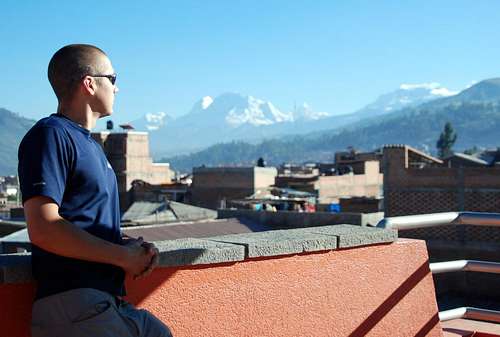
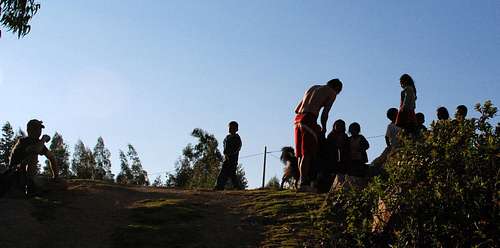
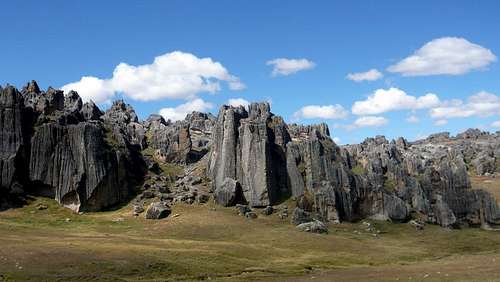
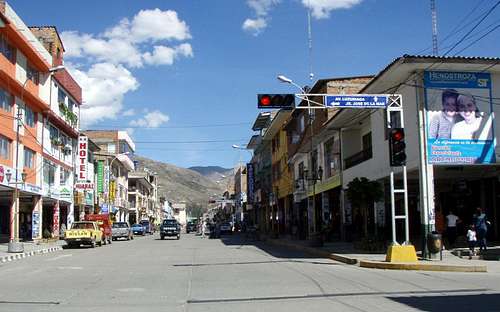
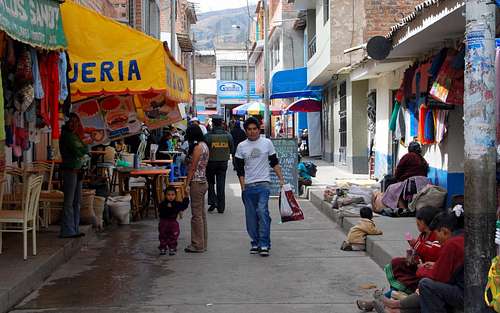

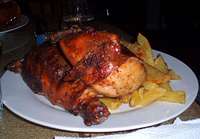











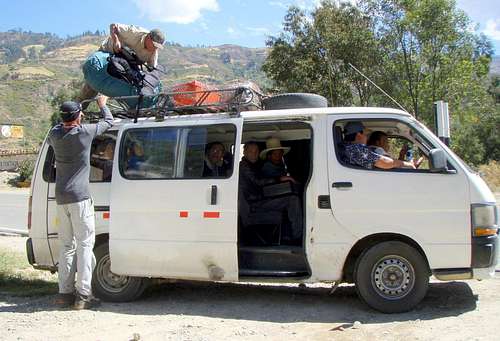
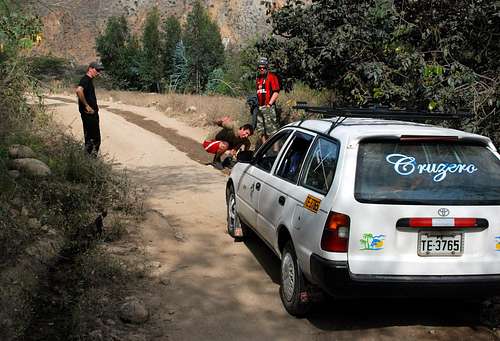
MashaSho - Sep 28, 2010 7:48 am - Hasn't voted
Another place to stayWe stayed in very nice place, called Huaraz BB, just 5 minutes walking from Salida church (10 minutes from Olaza's). It is new, even not officially opened yet, but very nice, clean, with pretty big rooms, in breakfast included all that you wish (you can ask night before), tea all day and night, also terrace with beautiful view. Owner in Paulino, very nice person, also he have agency - Huarascaran (http://www.huascaran-peru.com/), with good prices, without making tricks (like in some agencies at main street that we also had deal with). To find BB ask Paulino there.